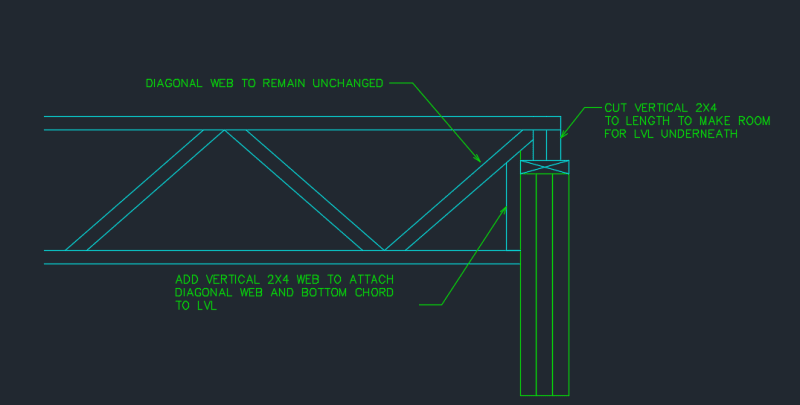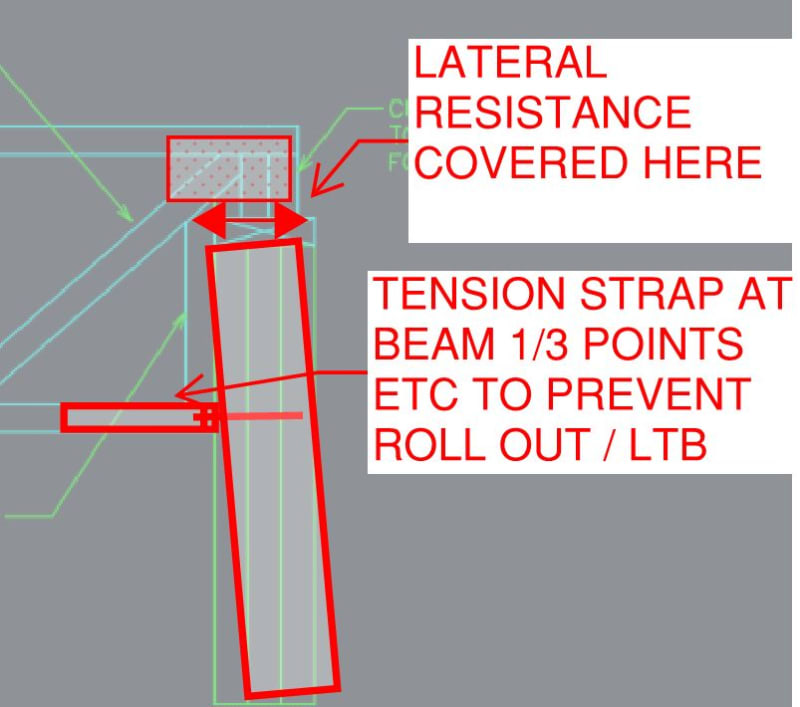jdubs88
Structural
- Jun 9, 2020
- 13
I am working with a builder who is removing an exterior wall for an addition and installing a LVL over the opening. There are box truss floor joists running perpendicular and need to tie into the LVL. In order to do that, the box trusses will need to be trimmed back about 3.5" to make room for the new beam. I have not had a situation like this and have two questions:
1) Is it appropriate to trim back the truss, cut the diagonal brace so it still lands in the new corner, replace the (2) 2x4 vertical members, and attach plywood on both sides of the truss to act as a new gusset (see attached sketch)?
2) If #1 is proper procedure, we would install a L4x4x5/16 angle near the bottom of the LVL to act as a ledger for the box trusses. Is there any danger in installing this ledger that close to the bottom of the LVL (see sketch)?
1) Is it appropriate to trim back the truss, cut the diagonal brace so it still lands in the new corner, replace the (2) 2x4 vertical members, and attach plywood on both sides of the truss to act as a new gusset (see attached sketch)?
2) If #1 is proper procedure, we would install a L4x4x5/16 angle near the bottom of the LVL to act as a ledger for the box trusses. Is there any danger in installing this ledger that close to the bottom of the LVL (see sketch)?




